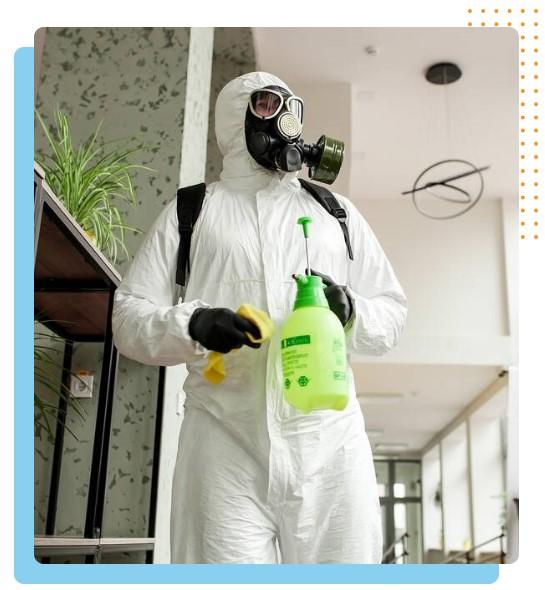
Living in high-density areas comes with its perks: bustling neighborhoods, convenient amenities, and a vibrant atmosphere. However, it also brings about unique challenges, particularly when it comes to pest control. With the close proximity of buildings and people, pests can quickly become a nuisance if left unchecked. At Pest Blaster, we understand the intricacies of managing pest infestations in densely populated regions. In this guide, we’ll explore effective strategies for keeping pests at bay in high-density areas.
Living in a bustling metropolis or a densely populated urban area has its own charm. The convenience of having amenities at your doorstep and being surrounded by a vibrant community is unparalleled. However, with the close proximity of buildings and the constant hustle and bustle, comes the inevitable challenge of dealing with pests. From cockroaches scurrying in narrow alleyways to rodents seeking shelter in apartment buildings, local pest control efforts are crucial to prevent these infestations from spiraling out of control. Engaging with a trusted local pest control service can help manage these nuisances promptly and efficiently, ensuring your urban living experience remains comfortable and pest-free.
Education is key in preventing pest problems. Customised training sessions for residents and property managers on how to recognise and mitigate pest risks can drastically reduce the likelihood of infestations.
Pest control is most effective when an entire community is engaged. Collaborative efforts involving local councils, pest control professionals, and residents can lead to coordinated strategies that effectively manage pest populations across large areas.
Highlighting specific instances where integrated pest management has successfully been implemented can provide a blueprint for similar high-density areas. These case studies not only showcase the strategies but also highlight the collaborative efforts of different stakeholders. By exploring these examples on our blog, readers can gain valuable insights into the practical application of these strategies in their own local contexts.
Prevention is always better than cure. Here are some preemptive steps that can be taken:
While DIY methods can be helpful, engaging professional pest control services like Pest Blaster offers a more comprehensive approach. These services include:
With increasing awareness about environmental impact, eco-friendly pest control methods are crucial. This includes using biological control agents like parasites or predators of pests and employing organic compounds that degrade quickly in the environment, minimising other ecological impacts.
Adhering to local and national regulations is not only about compliance but also about ensuring the safety and well-being of the community. Pest control operators must stay informed about the latest laws and guidelines which dictate the safe usage of pest control substances and methods.
Setting up systems to gather feedback and suggestions from residents can help tailor pest control efforts to the specific needs and observations of those most affected.
Using advanced data analytics to track pest control effectiveness over time can help refine strategies and ensure resources are used efficiently.
Cooperation with local health authorities can help address public health concerns related to pests, such as disease transmission.
Continued investment in research and development in the field of urban pest control can lead to better solutions that are both effective and environmentally friendly.
Encouraging professionals to undergo regular training and certification ensures that they are updated with the latest pest control techniques and safety measures. An integral part of this training includes ensuring environmental health through responsible pesticide use. By embracing these comprehensive strategies and focusing on both preventive measures and effective treatment, high-density areas can manage pest problems more effectively, ensuring safer and healthier environments for all residents. With the right combination of expert knowledge, community involvement, and advanced technology, urban pest control can reach new heights of efficiency and effectiveness. This approach not only targets immediate pest issues but also minimises potential ecological damage, preserving the urban landscape for future generations.
Effective pest control in high-density areas requires a tailored approach that addresses the specific needs and challenges of urban environments. At Pest Blaster, we specialise in providing customised pest management solutions that are safe, effective, and sustainable. If you’re experiencing pest issues in your apartment or building, contact us today to find out how we can help you live pest-free.
Urban environments often struggle with rodents, cockroaches, bedbugs, and ants.
It’s recommended to have at least bi-annual inspections to effectively manage pest risks.
While DIY methods can provide temporary relief, professional services are necessary for complete and lasting control.
Yes, pets can attract fleas, ticks, and other pests. Regular pet hygiene and preventive treatments are important.
Non-toxic treatments and baits are available that are safe around both children and pets. Discuss options with your pest control provider.
Pest Blaster services are one of the prominent pest control services that offer the best to the clients. We have a long chain of clients who are happier with our work.


Copyright © 2025 Pest Blaster. All Rights Reserved.